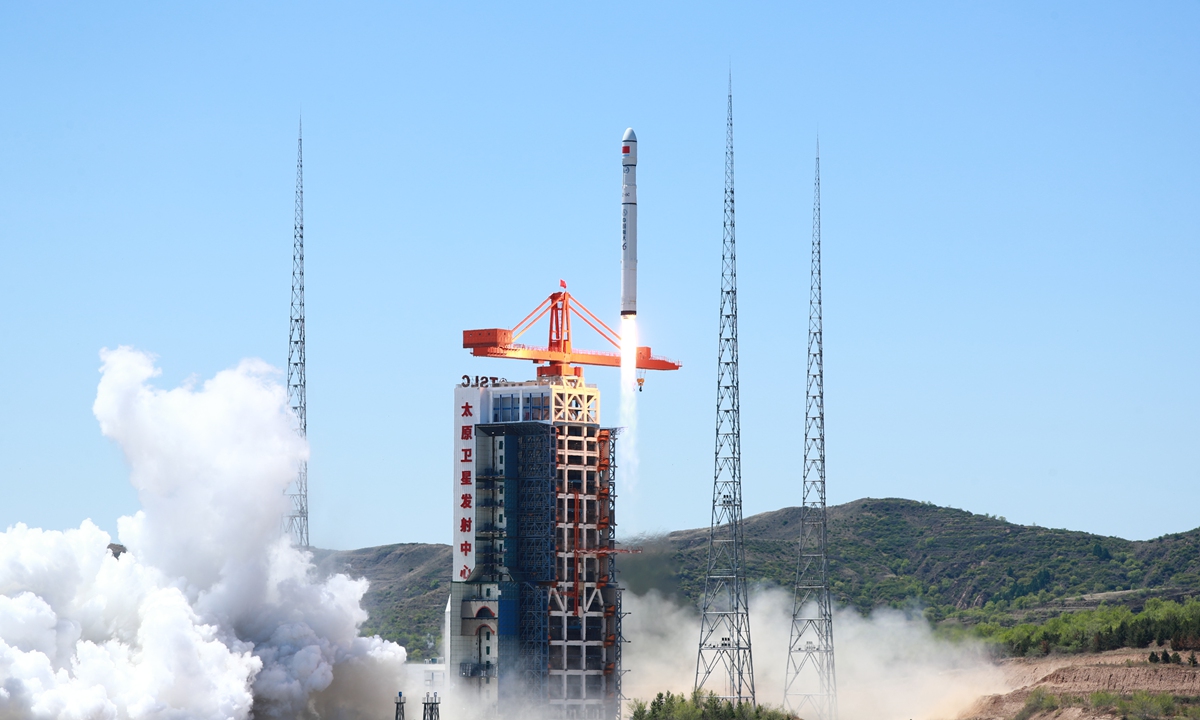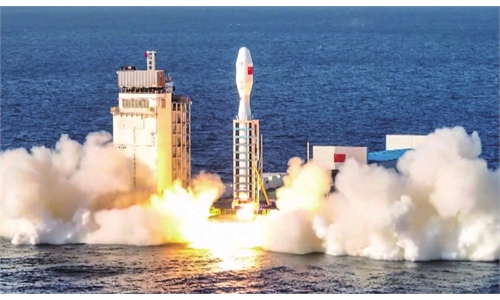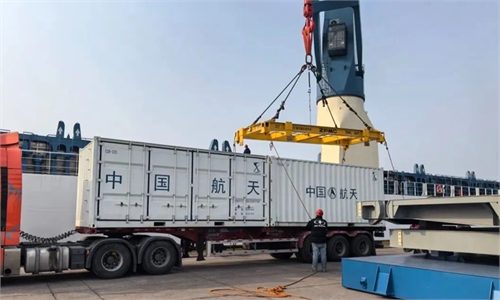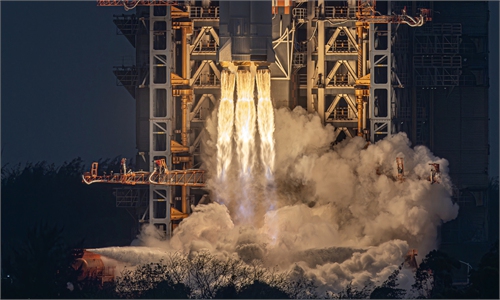
A Long March-6C carrier rocket carrying four satellites blasts off at 11:21 am, May 7, 2024, from the Taiyuan Satellite Launch Center in North China's Shanxi Province, making its debut flight. Photo: VCG
China successfully launched the first Long March-6C carrier rocket at the Taiyuan Satellite Launch Center in North China's Shanxi Province on Tuesday, carrying four satellites into planned orbit.
The rocket sent the Neptune-01 and Smart-1C, as well as a wide-band optical satellite and a high-resolution video satellite into space, according to China Aerospace Science and Technology Corporation (CASC). The mission marks the addition of new members to the Long March rocket family, further improving China's new generation of Long March series of launch vehicles, and promoting the accelerated modernization of China's active launch vehicles.
The rocket is a new generation of liquid launch vehicle developed by the CASC for the future commercial launch market, and it has a single-core and two-stage design, powered by liquid oxygen and kerosene engines.
The total length of the rocket is about 43 meters and its lift-off mass is about 215 tons. The rocket can be adapted with multi-specification satellite payload fairings according to different tasks.
The control system of this rocket adopts technology of Adaptive Augmentation Control (AAC), which is the first application of the technology on a domestic launch vehicle. The AAC can be simply understood as intelligent driving, which automatically adjusts the steering wheel and throttle by judging the road status, Hu Cunming, a rocket expert from the eighth Academy of CASC, told the Xinhua News Agency.
The technology can further enhance the adaptability and intelligence of the rocket's flight by adjusting the rocket's flight control strategy in real time online.
The development team developed a new lightweight storage box to realize the reduction of the rocket's weight by reducing the excess space between two boxes under the condition of carrying as much fuel as possible, which can further improve the structural efficiency of the rocket, Xinhua reported.
The team also used a method of "de-tasking" to maximize the unification of the product, by firstly creating a standard rocket that can adapt to multi-task requirements and can be put into production in rolling batches, and revising the standard rocket in accordance with the satellite supporting requirements, according to Xinhua.
The launch of the four satellites was a "carpool" mission carried out through commercialized bidding, and it was the first time that the launch services of the Long March series were put up for public bidding.
It was the 520th flight mission of the Long March series rockets.
Global Times



